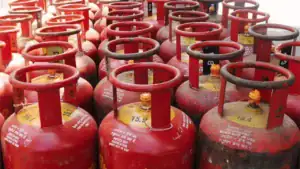New Delhi, July 19, 2025: Brazil has turned to Italy after ending negotiations with India for the acquisition of the Akash surface-to-air missiles (SAM) system after Indian firms offered only older versions of the missile, which Brazil deemed obsolete.
The intended deal with India was valued at around $60 million and was hoped to strengthen defense cooperation between the two BRICs nations.
Read more: Pakistan Army Opens Registration for Lady Cadet Course LCC-27
Akash Missile System
The Akash missile system is an indigenous medium-range SAM developed by India’s Defense Research and Development Organisation (DRDO) and produced by Bharat Dynamics Limited (BDL) and Bharat Electronics Limited (BEL).
It entered service with the Indian Air Force in 2014 and the Indian Army in 2015.
Key features include:
- Range and Speed: Akash has a standard range of 25-30 km with the upgraded variants extending up to 45 km. The newer Akash-NG version plans to reach between 70 to 80km. The missile travels at supersonic speeds of 2.8 to 3.5.
- Altitude Capability: It can engage targets between 100 metres and 20 km in altitude, covering fighter jets, helicopters, drones and cruise missiles.
- Guidance and Radar: Equipped with mid-course command guidance and terminal active radar homing, supported by the Indian Rajendra 3D PESA radar with fortifying electronic counter-countermeasures.
- Mobility: The system is mounted on mobile platforms, ending quick deployment and protections of both, fixed and moving assets.
Limitations
The Akash missile has a few drawbacks:
- Obsolescence: Older versions lag behind contemporary Western and Russian systems in range and seeker technology.
- Technological Gaps: Lack of canistered launchers and advanced seekers in earlier variants
- Limited Engagement Envelope: Reports of performance issues during conflicts, including the Battle of Hakkari, may damaged confidence internationally.
The Indian Defense Industry
India’s defense sector has some indigenous programs such as Akash, Tejas fighter jets and BrahMos missiles. The South Asian nation aims to achieve self-reliance in defense.
The main challenges facing the industry include:
- High Performance Expectations: International buyers seek advanced, reliable systems comparable to established global players, which the Indian defense sector is nowhere near.
- Continuous Upgrades Needed: to meet evolving battle requirements and certification standards, and the Indian defense is still playing catch up to that.
- Geopolitical Factors: Defense trade is often influenced by diplomatic and strategic interests.
Brazil’s Shift to Italy
Brazil’s rejection of the Akash missile’s older variants reflects what most nations in world want – interest in cutting-edge technology.
Read more: Govt Considers Top General to Lead Civil Armed Forces
The South American nation is now in talks with Italy, reportedly considering systems such as the SAMP/T, known for longer range and proven export success.









